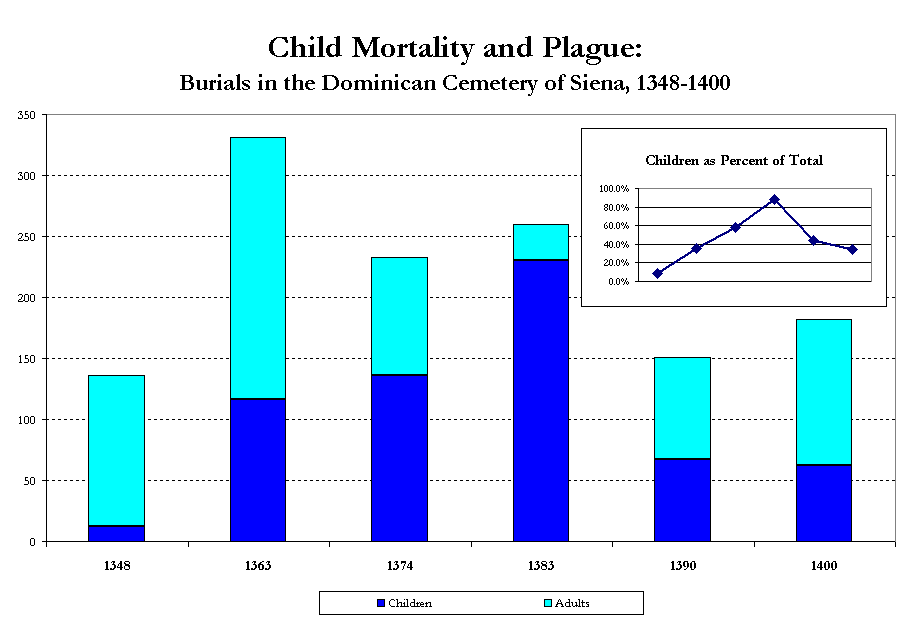
This chart describes vividly the special vulnerability of children to the ravages of plague in the late fourteenth century. The data come from records of the Dominican cemetery in Siena, Italy, where precise accounts were kept of who was buried and their age at death. The bear witness to a remarkable transformation in the pattern of plague mortality: of 136 people buried in the Dominican cemetery in 1348, the year of the first outbreak, the overwhelming majority were adults; not quite 9% were children. Over the next three decades, that ratio was reversed: already in 1363, the proportion of young people killed by plague had risen so sharply as to earn it the label pestis puerorum--the children's plague. Accordingly, children made up 35% of the total number buried in the Dominican cemetery. The apex of child mortality came in 1383, when 88.5% of the buriedvictims were children.